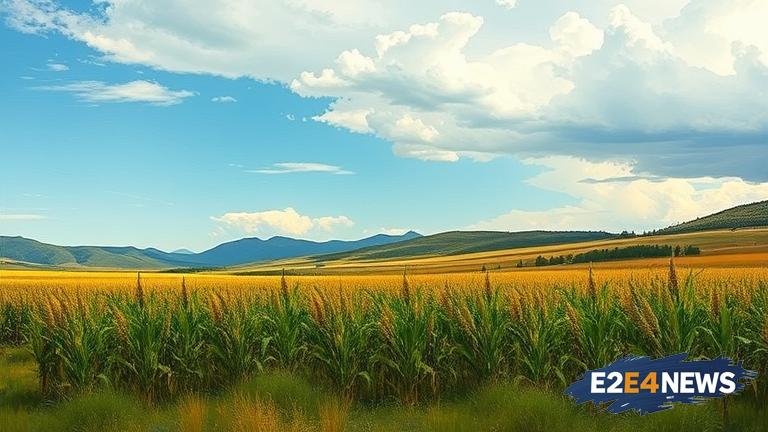Colorado’s agricultural landscape is home to a fascinating phenomenon known as ‘corn sweat’, where crops release moisture into the air, adding thousands of gallons of water to the sky. This process is a crucial part of the state’s water cycle, with significant implications for the environment and local ecosystems. Corn sweat occurs when crops, such as corn and other vegetation, undergo a process called transpiration, where they release water vapor into the air through their leaves. This water vapor is then carried away by wind and can eventually form clouds, leading to precipitation. The amount of water released by crops in Colorado is substantial, with some estimates suggesting that it can reach up to 10,000 gallons per acre per day. This phenomenon is not unique to Colorado, but the state’s semi-arid climate and extensive agricultural lands make it a significant contributor to the regional water cycle. The corn sweat phenomenon has important implications for weather forecasting, as it can influence local precipitation patterns and even impact the formation of thunderstorms. Furthermore, it highlights the complex relationships between agriculture, climate, and the environment, underscoring the need for sustainable farming practices that balance crop production with environmental stewardship. In addition to its environmental significance, corn sweat also has economic implications, as it can impact crop yields and affect the livelihoods of farmers and rural communities. As the global population continues to grow, understanding and managing the water cycle will become increasingly important, and phenomena like corn sweat will play a critical role in informing strategies for sustainable water management. The study of corn sweat also has broader implications for our understanding of the Earth’s climate system, as it highlights the complex interactions between the atmosphere, land surface, and oceans. By exploring this phenomenon in more detail, scientists can gain valuable insights into the dynamics of the water cycle and develop more accurate models for predicting weather patterns and climate change. Moreover, the corn sweat phenomenon has significant implications for water resource management, as it can help inform decisions about irrigation, water conservation, and flood control. In Colorado, where agriculture is a significant sector of the economy, understanding and managing the water cycle is crucial for ensuring the long-term sustainability of farming practices. The state’s agricultural industry is working to develop more efficient irrigation systems and implement conservation practices that minimize water waste, while also protecting the environment and supporting local ecosystems. As research into corn sweat continues to evolve, it is likely to reveal new insights into the complex relationships between agriculture, climate, and the environment, and highlight the need for integrated approaches to managing the water cycle. This, in turn, will require collaboration between farmers, scientists, policymakers, and other stakeholders to develop and implement effective strategies for sustainable water management. Ultimately, the study of corn sweat serves as a reminder of the intricate web of relationships that exists between human activities, the environment, and the climate, and underscores the need for a more nuanced understanding of the complex systems that govern our planet. By exploring this phenomenon in more detail, we can gain a deeper appreciation for the importance of sustainable agriculture and the need to protect the environment, while also supporting the livelihoods of farmers and rural communities. The corn sweat phenomenon is a powerful reminder of the interconnectedness of our world and the need for a more holistic approach to managing the water cycle, one that balances human needs with environmental stewardship and long-term sustainability. As we continue to learn more about this fascinating phenomenon, it is likely to reveal new insights into the complex relationships between agriculture, climate, and the environment, and highlight the need for integrated approaches to managing the water cycle. In conclusion, the corn sweat phenomenon is a significant aspect of Colorado’s water cycle, with important implications for the environment, agriculture, and local ecosystems. By studying this phenomenon in more detail, we can gain a deeper understanding of the complex relationships between human activities, the environment, and the climate, and develop more effective strategies for sustainable water management.





